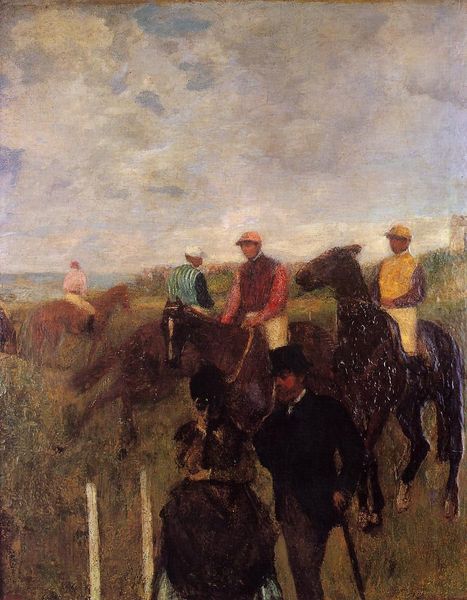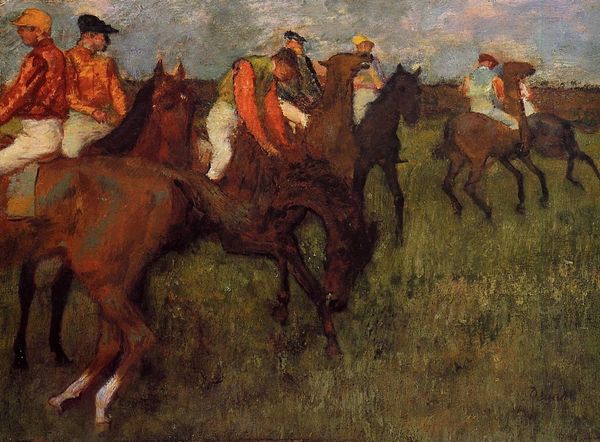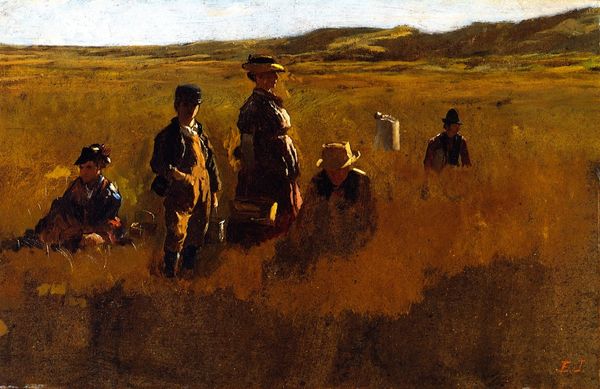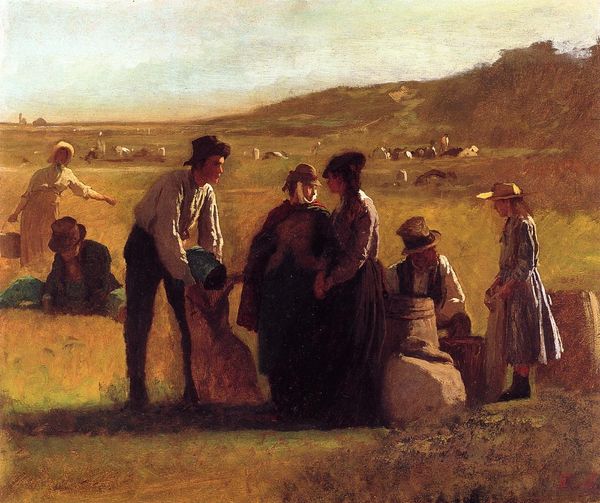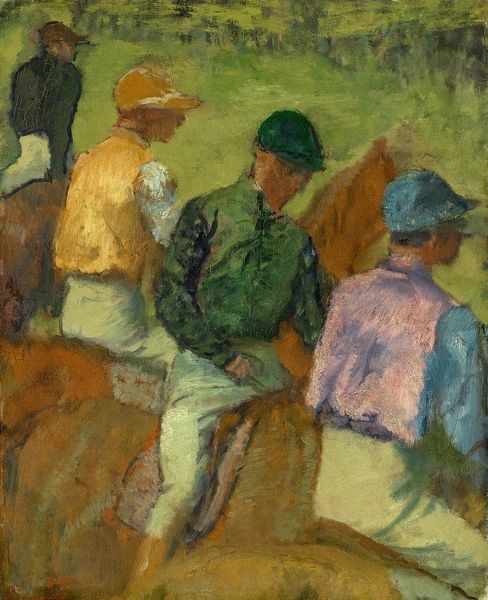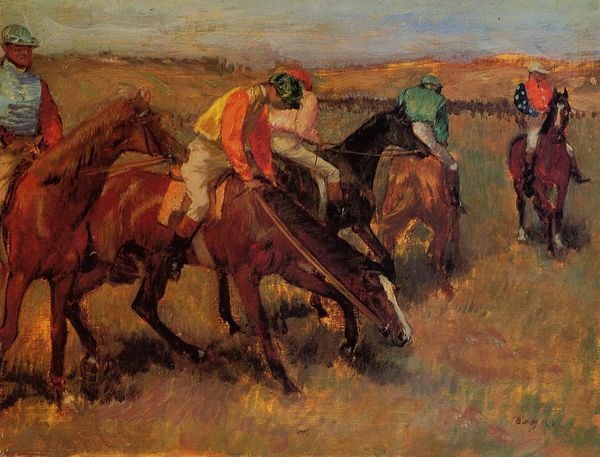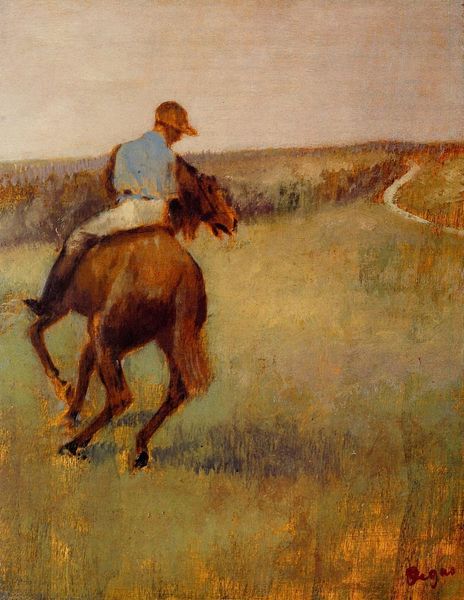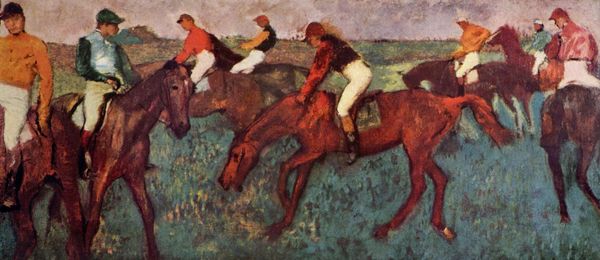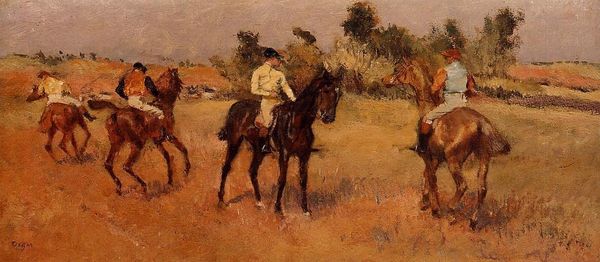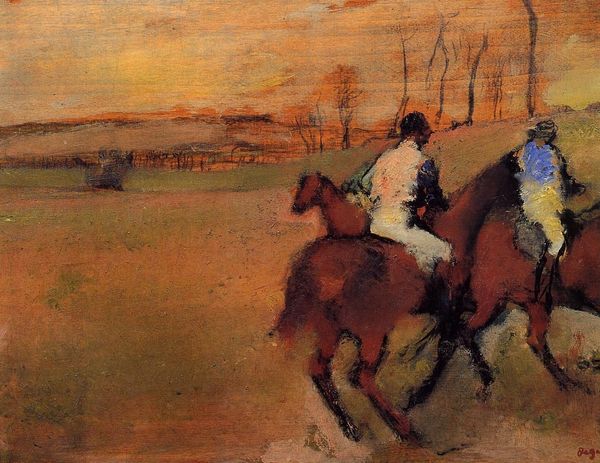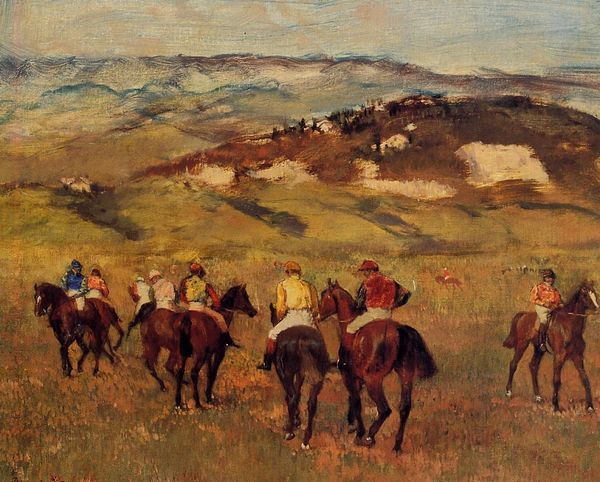
plein-air, oil-paint
#
portrait
#
impressionism
#
plein-air
#
oil-paint
#
oil painting
#
genre-painting
#
realism
Copyright: Public domain
Editor: This is "Five Boys on a Wall," painted in 1871 by Eastman Johnson, using oil on canvas. I’m struck by its candid feel, like a captured moment of everyday life, but also there is a sense of social stratification evident from the sartorial distinctions amongst them. What do you see in this piece? Curator: I see a window into a specific moment in American history, shaped by post-Civil War reconstruction. Consider the boys themselves – not just individuals, but potential symbols. Their differing clothes hint at class divisions during a period of significant social upheaval. What roles do you think these children were expected to perform within that socio-economic landscape? Editor: I hadn't really considered that angle. I suppose their future prospects would have been determined by the economic circumstances of their families. One could say that Johnson captured a critical juncture, before the full impact of industrialization really took hold in every corner of American life. Curator: Precisely! And it raises questions about childhood itself. Were these boys allowed the innocence of youth, or were they already burdened by societal expectations and economic necessity? Look at how Johnson uses plein-air techniques; the light, while beautiful, also serves to reveal their faces, their expressions, their realities. How does the act of portraying children in a seemingly casual setting subtly underscore deeper socio-political issues? Editor: That’s a very different reading than I had initially, which was simply a scene of children enjoying an ordinary day. The clothing variations point to something else though, something like social inequality and its impact on even the youngest members of society. Curator: Exactly. It's in these nuances that Johnson encourages us to see beyond a simple genre painting and consider the complex narratives shaping American identity. What began as a quaint scene transforms into a commentary on social realities. Editor: It's amazing how much context can influence interpretation! I'll definitely approach artworks with more historical awareness going forward. Curator: Absolutely. Art, at its most potent, encourages that critical dialogue between past and present.
Comments
No comments
Be the first to comment and join the conversation on the ultimate creative platform.
